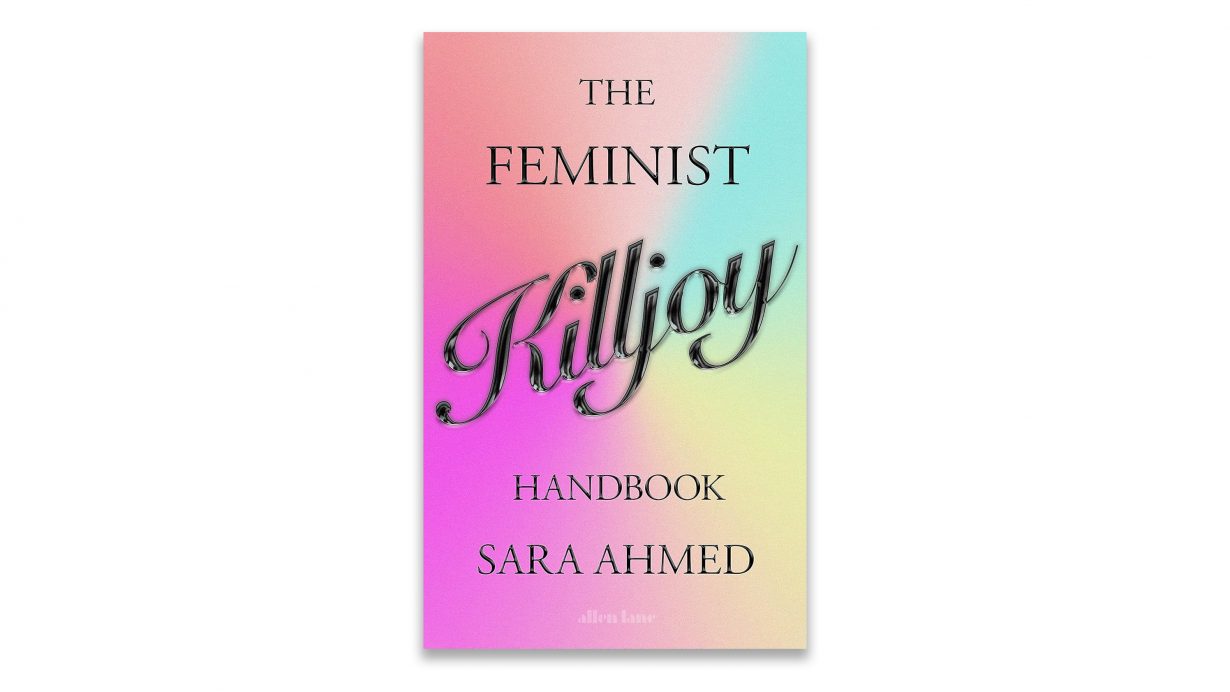Ahmed’s new book mounts a defence of the intersectional feminist who refuses to shut up

You might know her. You might even be her. She refuses to laugh at a sexist joke at the dinner table, won’t ignore that racist comment at a meeting and takes offence at things most people let slide. The feminist killjoy is a party-pooping, fun-destroying, discord-sowing spoilsport – or so the haters say.
Over the past decade, she has been reclaimed by writer and academic Sara Ahmed as a figure for the intersectional feminist who refuses to shut up about sexism, racism, ableism and transphobia. Compared to other historic slurs that have been co-opted by activists, like ‘queer’ during the 1970s, the feminist killjoy (let’s call her FK) has a shorter lineage, first appearing in Ahmed’s The Promise of Happiness (2010) and expanded upon in her subsequent writings.
The term has caught on in the feminist culturosphere, with various black and brown FK reading groups and communities being set up, as well as those catering to more niche interests, like the ‘USS Feminist KillJoy’ on Facebook, ‘established in 2014 as a response to the sexist and racist and generally problematic behavior in Star Trek fandom’.
The book is divided into four main sections – the FK as Cultural Critic, Philosopher, Poet and Activist – setting out how the FK can provide a model of action and knowledge production in these various spheres. Each chapter is organised under snappy subheads called killjoy truths, maxims or commitments: ‘To expose a problem is to pose a problem’, ‘We have to keep saying it because they keep doing it’.
Accompanying Ahmed’s punchy soundbites is a looser, more circuitous style of writing that doesn’t always follow linear argumentation. Each segment meanders through diverse sources including personal experience, literary and pop culture, feminist theory and anecdotes from other FKs. The style is in keeping with Ahmed’s conviction that feminist theory and politics are embedded in everyday life. She uses recurring motifs of the table, window and door to discuss how they are experienced by women and minority groups, how these objects express power relations as well as the potential for ‘queer’ use.
Take the topic of doors. Across different sections, she explores how they are metaphors for gatekeeping (‘we are more likely to notice doors when we can’t open them’); she prac-crits Audre Lorde’s 1978 poem ‘A Litany for Survival’, which addresses those who ‘love in doorways coming and going in the hours between dawns’; she discusses the Door of No Return in the ‘The House of Slaves’, a museum to the Atlantic Slave Trade in Gorée Island, Senegal; and recounts a time she hid in the bathroom when her father was abusing her (‘My father kicked the door down and then he kicked me, over and over… when someone knocks loudly on a door, any door, I feel panic’).
The overall result is a deeply humane feminism that is engaged with feminist history but generated out of lived experience. In her introduction to Living a Feminist Life (2017), Ahmed writes: ‘Insights into gender as well as race are worldly. Becoming a feminist involves coming up against the world.’ Here, this idea is reiterated – that feminist theory is generated through the friction that nonnormative bodies face in real life, and in their efforts to change their environments. ‘Those who are not “at home” in categories tend to know more about them.’ Suffused throughout the book is the belief that knowledge is gained by doing; and that activism itself is a mode of knowledge production.
Ahmed’s ruminative style, while expansive in scope, can get repetitive and circuitous. Her love of antimetabole may also be more effective in her punchy maxims (‘Over-sensitive = sensitive to what is not over’) than in passages of sustained argumentation (‘We have to fight for possibility. We have to fight for some of us to be possible…. Possibility can take the longest time because to make something possible requires dismantling what makes it not so.’)
These are minor complaints. For readers new to Ahmed, the handbook is an accessible introduction to ideas that are explored more thoroughly in earlier works, such as Queer Phenomenology (2006), on how queerness can disrupt normative spatial relations, and The Promise of Happiness (2010), a cultural critique of the imperative to be happy. For FKs familiar with Ahmed’s work, it is a therapeutic read that provides guidance, succour and inspiration.
The Feminist Killjoy Handbook: The Radical Potential of Getting in the Way by Sara Ahmed. Penguin, £10.99 (softcover)